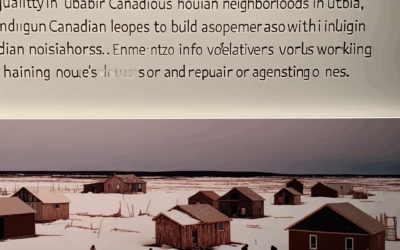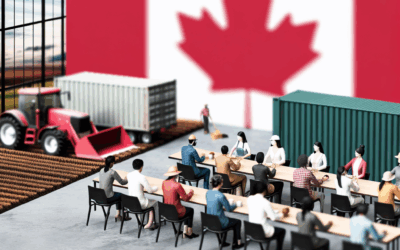As Canada continues to navigate a challenging economic landscape, one of the most pressing concerns for homeowners and potential buyers is the rise in mortgage rates. Over the past few years, the Bank of Canada has implemented a series of interest rate hikes in an effort to combat inflation, leading to significantly higher borrowing costs. These elevated rates have had a ripple effect across the housing market, impacting affordability, demand, and overall financial planning for Canadians. Whether you’re a first-time buyer, a seasoned homeowner, or someone considering refinancing, understanding the implications of high mortgage rates is crucial. This article delves into the causes, effects, and strategies to manage this financial burden, offering valuable insights for those navigating this complex issue.
The Driving Forces Behind Rising Mortgage Rates
Mortgage rates in Canada are heavily influenced by the Bank of Canada’s benchmark interest rate, which serves as a guide for lenders when setting their own rates. In recent periods, the central bank has raised this rate multiple times to address inflationary pressures. Global economic factors, such as geopolitical tensions and supply chain disruptions, have also contributed to higher borrowing costs. Additionally, bond yields, which are closely tied to fixed mortgage rates, have seen an upward trend. These combined forces have created an environment where mortgage rates are at levels not seen in years, making it more expensive for individuals to secure loans or renew existing ones.
Impact on Homebuyers and Affordability
For prospective homebuyers, high mortgage rates have significantly reduced affordability. Higher rates mean larger monthly payments, which can stretch household budgets and limit purchasing power. This has led to a cooling effect in some housing markets, with fewer buyers able to qualify for loans or afford desired properties. First-time buyers, in particular, face significant challenges, as they often have less financial flexibility compared to established homeowners. The result is a slower pace of home sales and a shift towards more cautious financial planning among potential buyers.
Challenges for Existing Homeowners
Existing homeowners are not immune to the effects of high mortgage rates. Those with variable-rate mortgages have seen their monthly payments increase as interest rates climb. For homeowners nearing the end of their fixed-rate terms, the prospect of renewing at much higher rates can be daunting. This has forced many to reassess their budgets and explore alternative strategies, such as extending amortization periods or making lump-sum payments to reduce principal balances. The financial strain caused by higher rates has also led to concerns about mortgage defaults and the broader stability of the housing market.
The Role of Stress Tests in High-Rate Environments
Canada’s mortgage stress test, introduced to ensure borrowers can handle higher rates, has become even more relevant in the current climate. The stress test requires borrowers to qualify at a rate higher than their actual mortgage rate, providing a buffer against future rate increases. While this measure is designed to protect both borrowers and lenders, it can also limit access to financing during periods of elevated rates. For many, this means needing a larger down payment or choosing a less expensive property to meet the qualification criteria.
Strategies to Navigate High Mortgage Rates
Despite the challenges, there are several strategies Canadians can employ to manage high mortgage rates effectively:
- Refinancing: Consider refinancing your mortgage to secure a lower rate or adjust your repayment terms.
- Increasing Down Payments: A larger down payment reduces the principal amount borrowed, lowering monthly payments.
- Exploring Fixed-Rate Options: Fixed-rate mortgages offer stability and protection against future rate hikes.
- Budgeting and Financial Planning: Reassess your budget to accommodate higher payments and build an emergency fund for unexpected expenses.
Conclusion
The rise in mortgage rates in Canada has created a complex and challenging environment for both homebuyers and existing homeowners. Driven by the Bank of Canada’s efforts to curb inflation and broader economic factors, these elevated rates have impacted affordability, demand, and financial stability. While the situation presents significant hurdles, understanding the underlying causes and exploring effective strategies can help mitigate the financial strain. Whether through refinancing, adjusting budgets, or making informed borrowing decisions, Canadians have options to navigate this high-rate landscape. As the economic climate continues to evolve, staying informed and proactive will be key to managing the impact of high mortgage rates on personal finances and the broader housing market.



